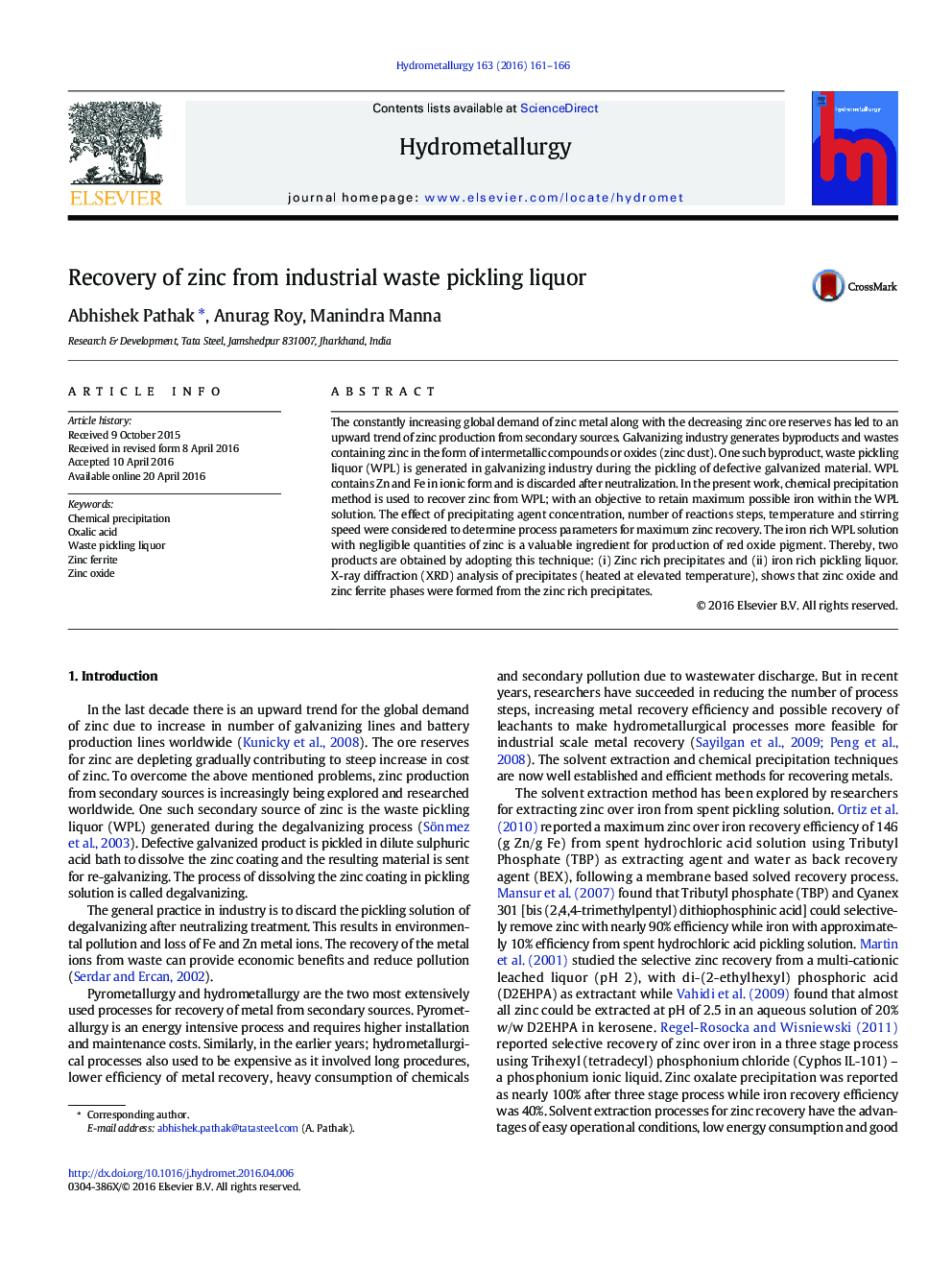| Article ID | Journal | Published Year | Pages | File Type |
|---|---|---|---|---|
| 211870 | Hydrometallurgy | 2016 | 6 Pages |
•Selective removal of zinc and iron from waste pickling liquor•Economic and industrially viable process of zinc removal•Zinc rich precipitates can be further used to generate value.•Reduces environment problems caused by discharge waste water from industries.
The constantly increasing global demand of zinc metal along with the decreasing zinc ore reserves has led to an upward trend of zinc production from secondary sources. Galvanizing industry generates byproducts and wastes containing zinc in the form of intermetallic compounds or oxides (zinc dust). One such byproduct, waste pickling liquor (WPL) is generated in galvanizing industry during the pickling of defective galvanized material. WPL contains Zn and Fe in ionic form and is discarded after neutralization. In the present work, chemical precipitation method is used to recover zinc from WPL; with an objective to retain maximum possible iron within the WPL solution. The effect of precipitating agent concentration, number of reactions steps, temperature and stirring speed were considered to determine process parameters for maximum zinc recovery. The iron rich WPL solution with negligible quantities of zinc is a valuable ingredient for production of red oxide pigment. Thereby, two products are obtained by adopting this technique: (i) Zinc rich precipitates and (ii) iron rich pickling liquor. X-ray diffraction (XRD) analysis of precipitates (heated at elevated temperature), shows that zinc oxide and zinc ferrite phases were formed from the zinc rich precipitates.
